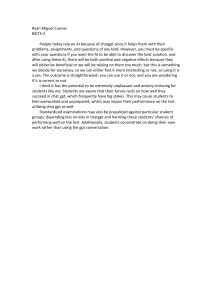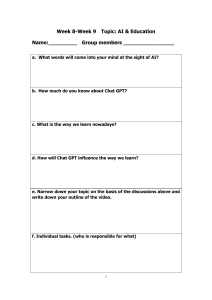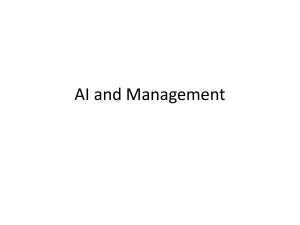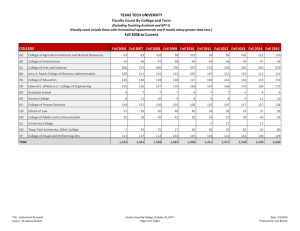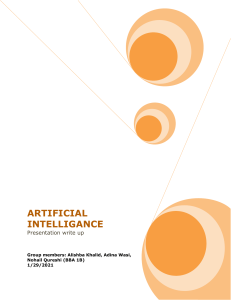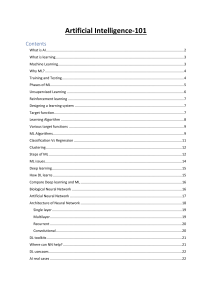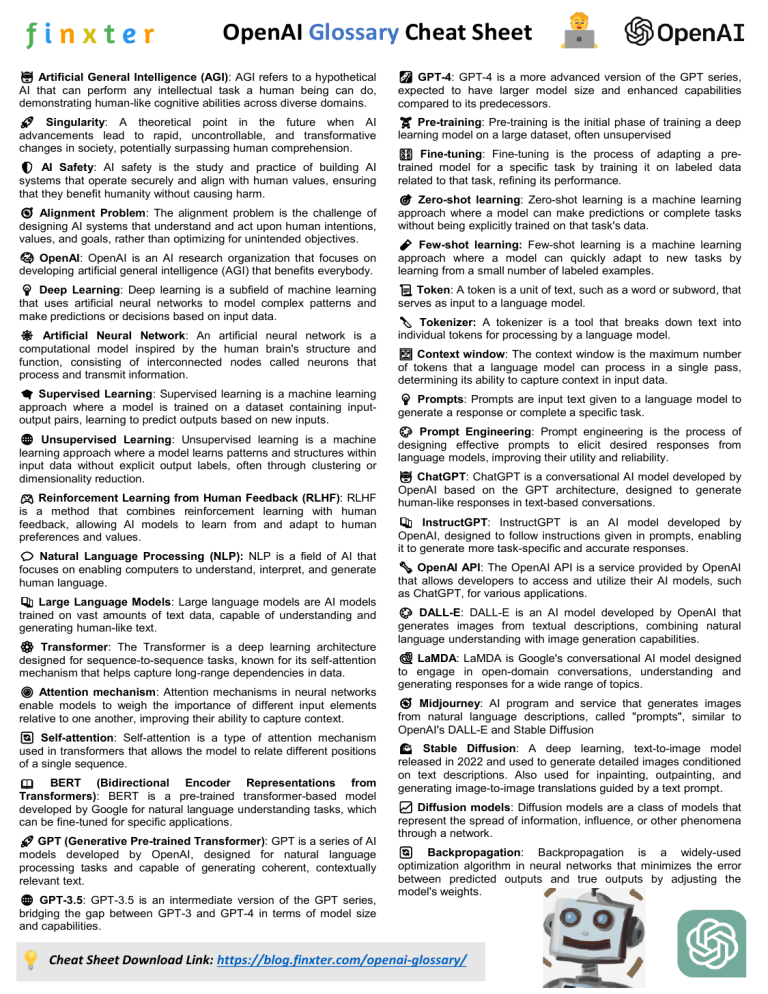
OpenAI Glossary Cheat Sheet 🤖 Artificial General Intelligence (AGI): AGI refers to a hypothetical AI that can perform any intellectual task a human being can do, demonstrating human-like cognitive abilities across diverse domains. 🌌 GPT-4: GPT-4 is a more advanced version of the GPT series, expected to have larger model size and enhanced capabilities compared to its predecessors. 🚀 Singularity: A theoretical point in the future when AI advancements lead to rapid, uncontrollable, and transformative changes in society, potentially surpassing human comprehension. 🏋️ Pre-training: Pre-training is the initial phase of training a deep learning model on a large dataset, often unsupervised 🛡️ AI Safety: AI safety is the study and practice of building AI systems that operate securely and align with human values, ensuring that they benefit humanity without causing harm. 🧭 Alignment Problem: The alignment problem is the challenge of designing AI systems that understand and act upon human intentions, values, and goals, rather than optimizing for unintended objectives. 🧠 OpenAI: OpenAI is an AI research organization that focuses on developing artificial general intelligence (AGI) that benefits everybody. 💡 Deep Learning: Deep learning is a subfield of machine learning that uses artificial neural networks to model complex patterns and make predictions or decisions based on input data. 🕸️ Artificial Neural Network: An artificial neural network is a computational model inspired by the human brain's structure and function, consisting of interconnected nodes called neurons that process and transmit information. 🎓 Supervised Learning: Supervised learning is a machine learning approach where a model is trained on a dataset containing inputoutput pairs, learning to predict outputs based on new inputs. 🌐 Unsupervised Learning: Unsupervised learning is a machine learning approach where a model learns patterns and structures within input data without explicit output labels, often through clustering or dimensionality reduction. 🎮 Reinforcement Learning from Human Feedback (RLHF): RLHF is a method that combines reinforcement learning with human feedback, allowing AI models to learn from and adapt to human preferences and values. 💬 Natural Language Processing (NLP): NLP is a field of AI that focuses on enabling computers to understand, interpret, and generate human language. 📚 Large Language Models: Large language models are AI models trained on vast amounts of text data, capable of understanding and generating human-like text. ⚙️ Transformer: The Transformer is a deep learning architecture designed for sequence-to-sequence tasks, known for its self-attention mechanism that helps capture long-range dependencies in data. 👁️ Attention mechanism: Attention mechanisms in neural networks enable models to weigh the importance of different input elements relative to one another, improving their ability to capture context. 🔄 Self-attention: Self-attention is a type of attention mechanism used in transformers that allows the model to relate different positions of a single sequence. 📖 BERT (Bidirectional Encoder Representations from Transformers): BERT is a pre-trained transformer-based model developed by Google for natural language understanding tasks, which can be fine-tuned for specific applications. 🚀 GPT (Generative Pre-trained Transformer): GPT is a series of AI models developed by OpenAI, designed for natural language processing tasks and capable of generating coherent, contextually relevant text. 🌐 GPT-3.5: GPT-3.5 is an intermediate version of the GPT series, bridging the gap between GPT-3 and GPT-4 in terms of model size and capabilities. 🎛️ Fine-tuning: Fine-tuning is the process of adapting a pretrained model for a specific task by training it on labeled data related to that task, refining its performance. 🎯 Zero-shot learning: Zero-shot learning is a machine learning approach where a model can make predictions or complete tasks without being explicitly trained on that task's data. 🧪 Few-shot learning: Few-shot learning is a machine learning approach where a model can quickly adapt to new tasks by learning from a small number of labeled examples. 📜 Token: A token is a unit of text, such as a word or subword, that serves as input to a language model. 🔪 Tokenizer: A tokenizer is a tool that breaks down text into individual tokens for processing by a language model. 🖼️ Context window: The context window is the maximum number of tokens that a language model can process in a single pass, determining its ability to capture context in input data. 💡 Prompts: Prompts are input text given to a language model to generate a response or complete a specific task. 🎨 Prompt Engineering: Prompt engineering is the process of designing effective prompts to elicit desired responses from language models, improving their utility and reliability. 🤖 ChatGPT: ChatGPT is a conversational AI model developed by OpenAI based on the GPT architecture, designed to generate human-like responses in text-based conversations. 📚 InstructGPT: InstructGPT is an AI model developed by OpenAI, designed to follow instructions given in prompts, enabling it to generate more task-specific and accurate responses. 🔧 OpenAI API: The OpenAI API is a service provided by OpenAI that allows developers to access and utilize their AI models, such as ChatGPT, for various applications. 🎨 DALL-E: DALL-E is an AI model developed by OpenAI that generates images from textual descriptions, combining natural language understanding with image generation capabilities. 🐍 LaMDA: LaMDA is Google's conversational AI model designed to engage in open-domain conversations, understanding and generating responses for a wide range of topics. 🧭 Midjourney: AI program and service that generates images from natural language descriptions, called "prompts", similar to OpenAI's DALL-E and Stable Diffusion 🌊 Stable Diffusion: A deep learning, text-to-image model released in 2022 and used to generate detailed images conditioned on text descriptions. Also used for inpainting, outpainting, and generating image-to-image translations guided by a text prompt. 📈 Diffusion models: Diffusion models are a class of models that represent the spread of information, influence, or other phenomena through a network. 🔄 Backpropagation: Backpropagation is a widely-used optimization algorithm in neural networks that minimizes the error between predicted outputs and true outputs by adjusting the model's weights. Cheat Sheet Download Link: https://blog.finxter.com/openai-glossary/
